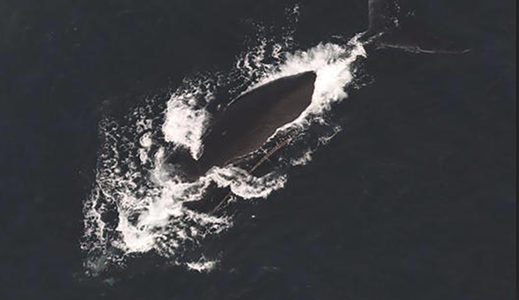Why do we live on Orcas? I believe most of us live here because it provides a healthy, beautiful and safe environment for ourselves and our children.
I feel compelled to respond to the recent property rights debate spurred by the Critical Areas Ordinance and Shoreline Master Program.
Our personal property is an investment. But to justify destroying the ecological health of the Sound, and the property of our neighbors, in order to maintain our personal property values, is not common sense.
I’m tired of people yelling “my rights! my rights!” at the expense of ecology which enables us to fish, enjoy local seafood and enjoy ourselves in and on the waters, sanctuary to so many who come here from all over world.
Those willing to compromise the ecology are thus willing to compromise the Orcas economy, because the economy depends on the ecology.
To those who say “environmentalists” care more about the environment than people, I say that is self-serving and untrue. No matter how often it’s repeated, it remains untrue. Our quality of life, the health of our island’s economy, and the health of the environment are inextricably linked.
Protecting eelgrass protects forage fish. Forage fish feed the salmon. The salmon feed us. Whatever toxins enter the fatty tissue of the fish and animals we eat, end up in us.
The property rights issue always revolves around property values. Protecting our environment is about property values. Anytime you buy anything it’s an investment and it’s a risk – that’s what happens whenever you buy a piece of land. To those who believe that the protection of our local ecosystems decreases property values to the point of a taking, are you also seeking compensation from the corporations who brought us this economic downturn and the resulting loss of our property values
Let’s be honest and call things what they are. Common sense is being good neighbors and good stewards of our environment. This means protecting it – for all of us, for our wildlife that we value, and for future generations.
Sharon Abreu, Eastsound
**If you are reading theOrcasonian for free, thank your fellow islanders. If you would like to support theOrcasonian CLICK HERE to set your modestly-priced, voluntary subscription. Otherwise, no worries; we’re happy to share with you.**







Well Said Sharon, and Right On! People who yell the loudest about “Property Rights” don’t seem to realize that EVERYTHING is INTERDEPENT with the Earth. If the Earth is poisoned so are WE! The filth in the runoff into the waters is what WE ARE CREATING BY OUR SELF-CENTERED ATTITUDES. The time is over for the pampered few and their “Investments”! Sanity is on the rise Finally! The People are waking up from the nightmare!
It is sad to see the consideration of our local issues devolve into the same unproductive “sound bites” that seem to undermine our national debate.
Let’s look at the CAO (and now, SMP) issues:
–Who is seeking to “justify destroying the ecological health of the Sound and the property of . . .neighbors, in order to maintain . . . personal property values”?
–Who on the islands is destroying the ecological health of the Sound?
–Who is harming the property of neighbors?
Just once, I’d like to discuss a concrete example, and if one exists, I want to know why our county government is not stopping that harm–because the county already has the power to do so–it simply has an abysmal record of enforcement.
So, what “toxins” from our islands are present in the salmon? Indeed, where is “the filth in the runoff into the waters”—here? Or in Tacoma? Or outside factory farms on the mainland?
My concern with the proposed rules is that no relationship between them and any protection of our ecosystem has been articulated. We seem to jump from “the Sound is polluted” to “you can’t build a house on your land in the county.” How do we get there?
Part of the issue is that the Department of Ecology would impose upon our small island county the same types of rules it created for the downsound counties who still have polluting industry and mega-development. (Our islands were once full of canning and logging and limekiln operations, but are now substantially restored.) The rules we’ve seen so far will be oppressively expensive for the single-family homeowner–thousands and thousands of dollars for “experts” to disprove the existence of wetlands or other habitat, for example.
More important, there is no cause-and-effect analysis showing that the proposed changes would have any positive effect on our environment. We believe that we are seeing solutions (from high-paid experts who seem to be blissfully unaware of conditions here) in search of a problem. What is the problem with single family homes? And if we have problems that the CAO needs to address, which of those problems are caused by individual homes and which, such as runoff, are caused by county roads? Which problems are caused by agriculture? Because the county and agricultural appear to be getting a “pass” in the CAO application; indeed, farms all over the state will be required only to comply “voluntarily” sometime and somehow in the future, despite the fact that they are often the source of sediment and water issues in the state, on a large scale.
It is inaccurate and unfair to suggest that the people raising these concerns are not concerned with the quality and future of our environment. I have followed the CAO process closely, read the “best available science” in several iterations, attended endless hearings and town halls, and reviewed the proposed rules. The rules fail the most fundamental legal requirements of being rationally related to an identified problem within the jurisdiction of the County. (I say this with some practical perspective, based on my long experience in drafting, defending and challenging regulations.)
It is interesting to hear that the “pampered few” with “investments” are the ones complaining about this situation. I suggest that more people need to get out to the meetings and meet the folks they are describing that way. They are often retired and living on fixed incomes, or working families hoping to build a home. The “pampered few” don’t have to worry–they can afford $50,000 for building permits and expert studies; they can afford lawyers and consultants; they can rebuild a home immediately if it is destroyed by fire; and they often already have shoreline homes and docks.
The straightforward question remains: what problem have we identified, how is it caused by single-family homes on the islands, and how are our existing rules not addressing it? In response, real (peer-reviewed) science would be appreciated; not “grey literature” produced by interest groups or government entities whose existence (fundraising or government budgets) relies on having “problems.” “The earth is poisoned” adds nothing to a rational discussion of the problems that fall within the ambit of the CAO or the identification of solutions to those problems.